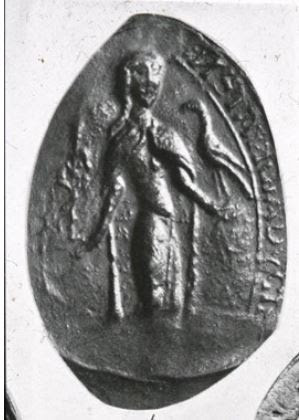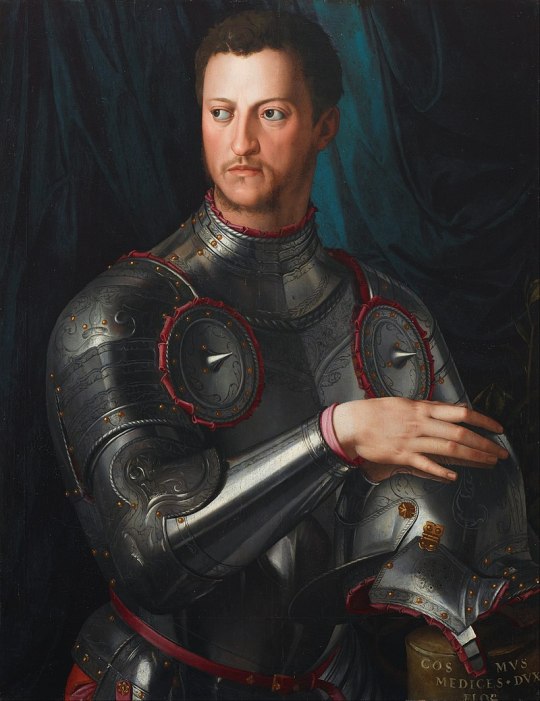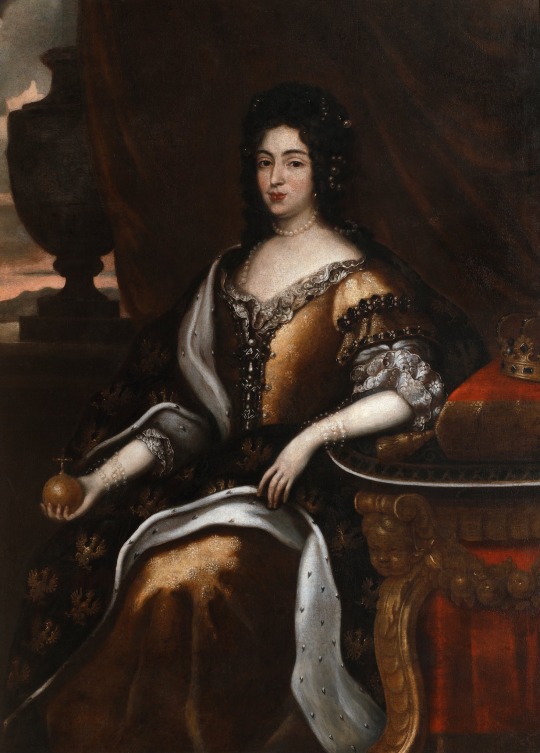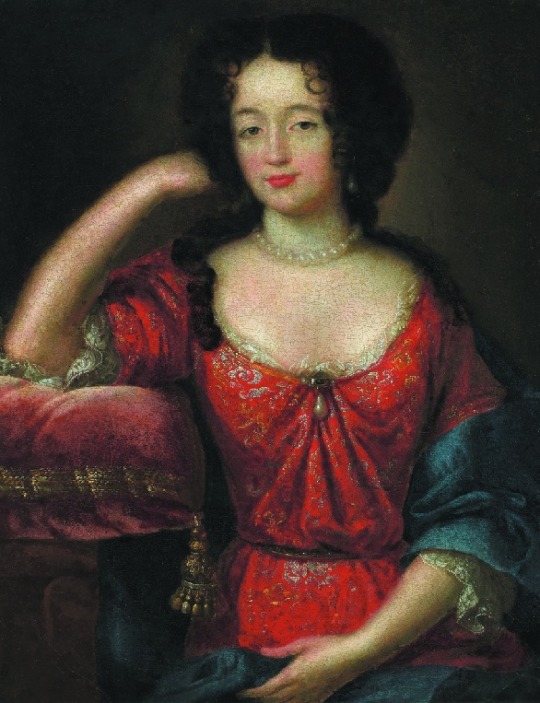#duke john casimir
Explore tagged Tumblr posts
Text






Royal Birthdays for today, June 12th:
Reizei, Emperor of Japan, 950
Gaozong of Song, Emperor of China, 1107
Constance, Duchess of Brittany, 1161
Cosimo I, Grand Duke of Tuscany, 1519
Anna of Württemberg, Duchess of Legnica, 1561
John Casimir, Duke of Saxe-Coburg, 1564
Karl Emich, Prince of Leiningen, 1952
Sibylla, Princess of Luxembourg, 1968
#emperor reizei#Gaozong of Song#constance of brittany#cosimo i#cosimo de medici#Anna of Württemberg#duke john casimir#long live the queue#royal birthdays#Karl Emich of Leiningen#sibylla of luxembourg
3 notes
·
View notes
Text
Vilnius
My final stop travelling through the Baltics was Lithuania’s capital Vilnius. I found it more pleasant than Riga and less touristy than Tallinn (helped by not having cruise ship visitors) and home to more than a hundred churches, of which I visited seventeen. It was a lovely place to wander around, enjoying the architecture. Before WW2 nearly half the population of Vilnius was Jewish and home…
#Bernadine Church and Monastery#Cathedral Square#Choral Synagogue#Church of All Saints#Church of Michael the Archangel#Church of St. Casimir#Church of St. Francis of Assisi#Church of St. Theresa#Church of the Assumption of the Blessed Virgin Mary and Franciscan Abbey#Dominican Church of the Holy Spirit#Gates of Dawn#Gediminas Castle Tower#Holy Cross Church#Holy Trinity Uniate Church#Lithuania#Orthodox Cathedral of the Theotokos#Orthodox Church of the Holy Spirit#Palace of the Grand Dukes of Lithuania#photography#Pirmas Blynas#Presidential Palace#Saint Catherine&039;s Church#St. Anne&039;s Church#St. John the Baptist and St. John the Apostle and Evangelist Church#travel#Užupis#Vilnius#Vilnius Cathedral#Vilnius Leonard Cohen statue
0 notes
Text

Alexander I Crowned as King of Poland
Artist: Michał Stachowicz (Polish, 1768–1825)
Date: 1815-1825
Medium: Oil on paper glued to canvas
Collection: National Museum in Kraków, Poland
Alexander I
Alexander Jagiellon (Polish: Aleksander Jagiellończyk; Lithuanian: Aleksandras Jogailaitis; 5 August 1461 – 19 August 1506) was Grand Duke of Lithuania from 1492 and King of Poland from 1501 until his death in 1506. He was the fourth son of Casimir IV and a member of the Jagiellonian dynasty. Alexander was elected grand duke of Lithuania upon the death of his father and became king of Poland upon the death of his elder brother John I Albert.
#panting#oil on paper#canvas#mihal stachowicz#polish painter#polish history#men#women#landscape#coronation#polish art#polish royalty#european art#19th century painting
2 notes
·
View notes
Text
Another one from my diploma. It’s quite old already and I think I’ll draw them all again, haha.
Marie Casimire Louise de La Grange d'Arquien (28 June 1641 – 30 January 1716), known also by the diminutive form "Marysieńka", was a French noblewoman who became the queen consort of Poland and grand duchess consort of Lithuania from 1674 to 1696 by her marriage to King and Grand Duke John III Sobieski of the Polish–Lithuanian Commonwealth.

Portraits of her under the cut:



20 notes
·
View notes
Text

PL:
Zamek królewski w Sandomierzu
W XIV wieku z fundacji króla Kazimierza Wielkiego na miejscu drewnianego grodu wzniesiono murowaną gotycką budowlę z murem zamkowym oraz wieżą obronną, zbudowaną na ośmiobocznym planie. Kronikarz Janko z Czarnkowa wymienia sandomierski zamek wśród 32 innych wystawionych z polecenia króla w ramach akcji wzmocnienia obronności kraju i poszczególnych miast. Ok. 1480r. wzniesiona została baszta południowa tzw. „kurza noga”, obecnie najstarsza zachowana część zamku.
W XVI wieku z inicjatywy króla Zygmunta I Starego rozpoczęto przebudowę gotyckiego zamku w renesansową rezydencję. Przebudowę upamiętniono tablicą erekcyjną z okolicznościowym napisem: „Zygmunt z łaski Bożej król Polski, wielki książę litewski, ruski, pruski, pan i dziedzic roku pańskiego 1520”.
Za panowania następnego króla Zygmunta II Augusta kontynuowano prace przy rozbudowie zamku. Obejmowały one budowę skrzydła zachodniego zakończonego narożną wieżą oraz połączenie muru północnego z wieżą bramną.
Za panowania króla Jana Kazimierza w 1656 r., w czasie „potopu” zamek został wysadzony w powietrze przez wycofujące się wojska szwedzkie. Zniszczeniu uległy skrzydła wschodnie i południowe. Od tego czasu stał się budynkiem użyteczności publicznej: urzędem, sądem i więzieniem. W 1768r. w czasie konfederacji barskiej zamek został ponownie zniszczony, tym razem przez kwaterujące w nim wojska rosyjskie.
Po III rozbiorze Polski zaborca austriacki przeznaczył zamek na sąd i więzienie. W 1844r. przebudowano pozostałości królewskiego zamku nadając mu surowe klasycystyczne formy architektoniczne. W końcu XIX stulecia półokrągły dziedziniec więzienny obudowano nowym skrzydłem tzw. „rogalem”, a w mur północny wstawiono budynek dla administracji więziennej. Tak ukształtowany zamek pełnił funkcje więzienne do 1959r.
W późniejszych latach przeprowadzono gruntowne prace remontowo-konserwatorskie, rozebrano budynek administracji i okalający dziedziniec, a w 1986r. przeznaczono zamek na siedzibę Muzeum Okręgowego w Sandomierzu.
EN:
The Royal Castle in Sandomierz, Poland
In the 14th century, founded by King Casimir the Great, a brick Gothic building with a castle wall and a defensive tower, built on an octagonal plan, was erected on the site of the wooden stronghold. The chronicler Janko from Czarnków mentions the Sandomierz castle among 32 others erected by order of the king as part of a campaign to strengthen the defense of the country and individual cities. Around 1480 the southern tower, the so-called "chicken leg", was erected, now the oldest surviving part of the castle.
In the 16th century, on the initiative of King Sigismund I the Old, the reconstruction of the Gothic castle into a Renaissance residence began. The reconstruction was commemorated with an foundation plaque with the occasional inscription: "Sigismund, by the grace of God, King of Poland, Grand Duke of Lithuania, Ruthenia, Prussia, master and heir of the year of our Lord 1520."
During the reign of the next king, Sigismund II Augustus, work on the expansion of the castle continued. They included the construction of the western wing ending with a corner tower and the connection of the northern wall with the gate tower.
During the reign of King John Casimir in 1656, during the "deluge", the castle was blown up by retreating Swedish troops. The eastern and southern wings were destroyed. Since then, the castle has become a public building: an office, a court and a prison. In 1768 during the Bar Confederation, the castle was destroyed again, this time by the Russian troops quartered there.
After the Third Partition of Poland, the Austrian partitioner used the castle as a court and a prison. In 1844 the remains of the royal castle were rebuilt, giving it strict classicist architectural forms.
At the end of the 19th century, the semicircular prison yard was enclosed with a new wing, the so-called "croissant", and a building for the prison administration was built into the northern wall. The castle shaped in this way served as a prison until 1959.
In later years, thorough renovation and conservation works were carried out, the administration building and the surrounding courtyard were demolished, and in 1986 the castle was designated as the seat of the District Museum in Sandomierz.
#sandomierz#polska#poland#zamek#castle#castello#architecture#architektura#historia#history#gothic#gothicarchitecture#architektura gotycka#gotyk#widok#view#viewpoint#landscape#krajobraz
4 notes
·
View notes
Text
Day 3: Bonne of Luxembourg
Bonne of Luxembourg (also known as Jutta/Judith)
Born: 20 May 1315 Died:11 September 1349
Parents: John of Bohemia and Elisabeth of Bohemia Duchess of Normandy and Countess of Anjou and Maine. Children: Charles V of France (21 January 1338 – 16 September 1380) Catherine (1338–1338) Louis I, Duke of Anjou (23 July 1339 – 20 September 1384) John, Duke of Berry (30 November 1340 – 15 June 1416) Philip II, Duke of Burgundy (17 January 1342 – 27 April 1404) Joan (24 June 1343 – 3 November 1373) Marie (12 September 1344 – October 1404) - the wife of Robert, Duke of Bar Agnes (1345–1349) Margaret (1347–1352) Isabelle (1 October 1348 – 11 September 1372)
She was the second daughter of John of Bohemia and Elisabeth of Bohemia and the first wife of John II of France.
She was first betrothed to the future King Casimir the Great of Poland but the arrangement failed as he married someone else. She was then betrothed to Henry of Bar, an arrangement that also failed. She then married John, Duke of Normandy.
The wedding took place at the Collegiate Church of Notre-Dame, Melun on 28 July 1332. She was 17 while her husband was 13. Her name was changed to Bonne (French version) or Bona (Latin version).
She is considered a patron of the arts, one of her favorites was the composer Guillaume de Machaut.
She died of the bubonic plague in Maubuisson on 11 September 1349, aged 34.
1 note
·
View note
Photo

Hubert Anton Casimir Dilger was born to Dr. Eduard and Emmeline Duerr Dilger on March 5, 1836, in the village of Eugen, Germany. His early education as a cadet in the military academies led to service as lieutenant in the Grand Duke of Baden’s Horse Artillery, primarily at the garrisons of Karlsruhe and Rastatt, where he developed unique and unconventional artillery tactics emphasizing close support for infantry, rapid mobility, and accuracy and speed of fire. Dilger secured a leave of absence from the Duchy and traveled to America offering his services to the Union, first commanding 1st Battalion, Virginia Light Artillery under Major General John C. Frémont and later Battery “I,” 1st Ohio Artillery in Major General Franz Sigel’s 1st Army Corps, Army of Virginia. Dilger was awarded the Medal of Honor for his actions at the battle of Chancellorsville in May 1863. In the Western Theater, Dilger’s accuracy and speed with his guns became legendary. Nicknamed “Leatherbreeches” due to his preference for buckskin trousers, the dashing and handsome young man became a popular personality, and a life-long friend of Adolph Metzner. Dilger purchased property near Front Royal, Virginia, and lived out his life as a farmer. He died on May 4, 1911, and was buried at Rock Creek Cemetery in Washington D. C., beside his wife who passed in 1906.
#civil war#hubert dilger#history#an ICON nicknamed 'leatherbreeches'#he was a legend an icon and he was the moment#look at the STYLE#may i even say...handsome boy? handsome boy#acw#american civil war
10 notes
·
View notes
Photo

Anna of Saxony, Duchess of Saxe-Coburg-Eisenach (16 November 1567 - 27 January 1613)
#anna of saxony#duchess of saxe-coburg-eisenach#daughter of augustus elector of saxony#wife of john casimir duke of saxe-coburg-eisenach#history#women in history#art
1 note
·
View note
Photo

Marie Louise Gonzaga (18 August 1611 – 10 May 1667) was Queen of Poland and Grand Duchess of Lithuania by marriage to two kings of Poland and grand dukes of Lithuania, brothers Władysław IV and John II Casimir. She was born in Nevers to Charles I, Duke of Mantua, and Catherine of Guise.
An active and energetic woman, she was a strong supporter of monarchy and religious persecution, for which she was disliked by the highly democratic Polish court and Polish nobility. However, she managed to stay involved in the Commonwealth's politics, which led to the foundation of the first Polish newspaper as well as other public institutions.
Together with Bona Sforza, she is regarded as one of the most influential and most powerful queens of the Kingdom of Poland and the Polish–Lithuanian Commonwealth.
39 notes
·
View notes
Photo



Matka Boska Częstochowska // The Black Madonna of Częstochowa
is a venerated icon of the Blessed Virgin Mary housed at the Jasna Góra Monastery in Częstochowa, Poland.
The painting (122 × 82 centimetres) displays a traditional composition well known in the icons of Eastern Christianity. The Virgin Mary is shown as the "Hodegetria" ("One Who Shows the Way"). In it, the Virgin directs attention away from herself, gesturing with her right hand toward Jesus as the source of salvation. In turn, the child extends his right hand toward the viewer in blessing while holding a book of gospels in his left hand. The icon shows the Madonna in fleur-de-lis robes. The painting was severly damaged by robbers in 1430, the wooden panel broken and slashed.
According to legends, the icon was painted by st. Luke the Evangelist on a cedar table top from the Holy Family house. It was later discovered in Jerusalem in 326 by st. Helena and brought to Constantinople.
Art historians say that the original painting was a Byzantine icon created around the sixth or ninth century.
It was brought to Częstochowa by Władysław Opolczyk, Duke of Opole. In late August 1384, he was passing the city with the picture when his horses refused to go on. He was advised in a dream to leave the icon at Jasna Góra.
In 1655 the Black Madonna miraculously saved the Jasna Góra Monastery from a Swedish invasion. During the Siege of Jasna Góra seventy monks and 180 local volunteers, mostly from the Szlachta (Polish nobility), held off 4,000 Swedes for 40 days, saved their sacred icon and turned the course of the war. This event led King John II Casimir Vasa to give what has become known as the Lwów Oath. He submitted the Polish Commonwealth under the protection of Our Lady and proclaimed her Queen of Poland in the cathedral of Lwów on 1 April 1656. (In the nineteenth century, the defense of the monastery became widely popularized in a novel, The Deluge, by Henryk Sienkiewicz (a 1974 movie was based on the novel)).
Częstochowa is regarded as the most popular shrine in Poland, with many Polish Catholics making a pilgrimage there every year. Pope John Paul II secretly visited as a student pilgrim during World War II, and came back many times as a bishop and as a pope.
The feast day of Our Lady of Częstochowa is celebrated on August 26.
#black madonna#black madonna of częstochowa#częstochowa#poland#polska#our lady of częstochowa#christian art#religious art#s#Mary Mother of God#catholic
114 notes
·
View notes
Photo







Royal Birthdays for today, November 30th:
John, Duke of Berry, 1340
Casimir IV Jagiellon, King of Poland, 1427
Christian VI, King of Denmark, 1699
Augusta of Saxe-Gotha, Princess of Wales, 1719
Henriette of Belgium, Duchess of Vendôme, 1870
Joséphine Marie, Princess of Belgium, 1870
Fumihito, Crown Prince of Japan, 1965
#crown prince akishino#henriette of belgium#josephine marie of belgium#Augusta of Saxe-Gotha#christian vi#john of berry#Casimir IV Jagiellon
40 notes
·
View notes
Text
Kings of Poland 960 -1795 ; The first known Polish ruler is Duke Mieszko I, who adopted Christianity under the authority of Rome in the year 966. He was succeeded by his son, Bolesław I the Brave, who greatly expanded the boundaries of the Polish state and ruled as the first king in 1025. The following centuries gave rise to the mighty Piast dynasty, consisting of both kings such as Mieszko II Lambert, Przemysł II or Władysław I the Elbow-high and dukes like Bolesław III Wrymouth. The dynasty ceased to exist with the death of Casimir III the Great in 1370. In the same year, the Capetian House of Anjou became the ruling house with Louis I as king of both Poland and Hungary. His daughter, Jadwiga, later married Jogaila, the pagan Grand Duke of Lithuania, who in 1386 was baptized and crowned as Władysław II Jagiełło, thus creating the Jagiellonian dynasty and a personal union between Poland and Lithuania.
During the reign of Casimir IV Jagiellon and Sigismund I the Old, culture flourished and cities developed. This era of progress, also known as the Polish Renaissance, continued until the Union of Lublin under Sigismund II Augustus, which unofficially marked the end of the Polish Golden Age. After the death of the last Jagiellonian king, the united Polish–Lithuanian Commonwealth became an elective monarchy with mostly foreigners elected as monarchs such as Henry III of France, who witnessed the introduction of the Golden Liberty system and Stephen Báthory, a capable military commander who strengthened the nation. The meaningful rule of the Vasa dynasty initially expanded the Commonwealth as the arts and crafts developed, as well as trade and commerce. King Sigismund III Vasa, a talented but somewhat despotic ruler, involved the country in many wars, which subsequently resulted in the successful capture of Moscow and the loss of Livonia to Sweden. His son, Władysław IV Vasa, fiercely defended the Commonwealth's borders and continued the policy of his father until his death, unlike John II Casimir whose tragic rule resulted in his abdication.
#tribe of david#church of faithful believers#minister damontgarrett#healthy lifestyle#biblelife#tabernacle of faithful believers#damontgarrett
0 notes
Text
Armenians, Assyrians, Jews, and the Origins of “Genocide”
Preface: On Wednesday January 10, at the Center for Jewish History, human rights lawyer Philippe Sands will explore how personal lives and history are interwoven in his book East West Street. In this work, Sand connects his own work on crimes against humanity, to an untold story at the heart of the Nuremberg Trials. A conversation with Douglas Irvin-Erikson, author of Raphäel Lemkin and the Concept of Genocide, will follow. He will discuss the ongoing consequences of the concept of genocide, from the Armenian killings of 1915, to the atrocities perpetrated on the Yazidi and Rohingya communities a century later.
CONVENTION ON THE PREVENTION AND PUNISHMENT OF THE CRIME OF GENOCIDE. ADOPTED BY THE GENERAL ASSEMBLY OF THE UNITED NATIONS ON 9 DECEMBER 1948
THE CONTRACTING PARTIES,
HAVING CONSIDERED the declaration made by the General Assembly of the United Nations in its resolution 96 dated 11 December 1946 that genocide is a crime under international law, contrary to the spirit and aims of the United Nations and condemned by the civilized world ;
RECOGNIZING that at all periods of history genocide has inflicted great losses on humanity; and
BEING CONVINCED that, in order to liberate mankind from such an odious scourge, international co-operation is required,
HEREBY AGREE AS HEREINAFTER PROVIDED
So begins the Convention on the Prevention and Punishment of the Crime of Genocide, ratified by the United Nations in 1951.
The first inklings of the Convention took form not during World War II, but in the head of a Polish Jewish teenager named Raphael Lemkin (1900-1959), who opened a newspaper one day in 1915. Staring back at him from the page was news of the Armenian Genocide: the 1915 mass murder of approximately 1.5 million Armenians by the Ottoman Empire and its successor state, the Republic of Turkey.
Lemkin would not have another intellectual encounter with this form of mass murder until 1933, when he learned of the Simele Massacre: the Iraqi mass murder of Assyrian Christians.
In the years between these two encounters, Lemkin studied linguistics at the University of John Casimir in Lvov, philosophy at the University of Heidelberg, and law back at John Casimir. He graduated with his legal degree in 1926. Lemkin worked as Public Prosecutor for the district court of Warsaw and, while doing so, wrote about law and worked on the team codifying the penal codes of Poland.
It was the plight of the Assyrian Christians which drove Lemkin to bring together his intellectual encounters with mass murder with his work as a lawyer. In October, 1933, the Legal Council of the League of Nations held a conference on international criminal law in Madrid. Lemkin attended, and there presented to the delegation his first attempt to enter recognition of mass killings aimed against a specific group of people into the international legal lexicon.
He urged the Council to accept his proposal that the “destruction of national, religious, and racial groups” should be declared “an international crime,” and proposed a ban on mass murder. The Nazi delegation to the conference greeted the proposal—introduced by a Polish Jew, of all things—with laughter. The proposal failed. When Lemkin returned to Poland, the Polish Foreign Minister reprimanded him for his remarks. Under pressure, Lemkin resigned from his public position in 1934 and went into private practice.
Five years later, mass murder came to Raphael Lemkin. When the Nazis marched into Poland, Lemkin joined up with a group of partisans in the forest. He escaped into Lithuania when the opportunity presented itself. The majority of his family—with the exception of his brother Elias, Elias’ wife, and their two sons—would die in the war between the machinations of Hitler and Stalin.
From Lithuania, Lemkin made his way to Sweden. There, in addition to lecturing on international finance at the University of Stockholm, Lemkin persuaded Swedish officials to give him copies of the Nazi directives issued to occupied nations. Soon thereafter, Lemkin’s friend and colleague, Duke University law professor Malcolm McDermott, invited Lemkin to join him as a professor at Duke. Directives in hand, Lemkin made his way east—via Russia and Japan—to the United States. He arrived in 1941.

Lemkin’s 1946 War Department ID
Lemkin presented the confiscated Nazi directives to the Department of State and the Department of War. When the United States entered Second World War, the military took him on as a teacher and consultant.
It was during this period that Lemkin completed what was quite possibly the most important work of his career, Axis Rule in Occupied Europe: Laws of Occupation, Analysis of Government, Proposals for Redress. In chapter 9, Lemkin, introduced the term and concept of “genocide,” combining the Greek “genos,” or, “race,” with the Latin “cide,” or, “killing.” In this, Lemkin created an entirely new legal conception of killing, one based on the deliberate destruction of a national, racial, ethnic, religious, or political minority by the majority or dominant group. With this piece of writing, Lemkin completed the work he began in Madrid nearly ten years previously.
In 1945, Lemkin advised US Supreme Court Judge Robert Jackson during the proceedings of the Nuremberg Trials. Over the course of the trials Lemkin fought to have the word “genocide” introduced into the record, but the British prosecutors objected on the grounds that the word was not listed in the Oxford English Dictionary.
In 1946 the UN General Assembly convened in Lake Success, NY. Lemkin, determined to have the act of genocide condemned by the highest international legal body, presented a draft of the Genocide Convention to three UN member states: Cuba, India, and Panama. He persuaded them to sponsor the Convention. With the support of the United States, the resolution to ratify the Convention went before the General Assembly. The General Assembly approved the draft of Resolution 96 (I) on December 11, 1946.
Over the next two years, the UN hammered out the wording and details of the Convention on the Prevention and Punishment on the Crime of Genocide, with Lemkin regularly consulting on the articles of the treaty. In December 1948, the draft of the Convention went before the General Assembly at the Palais de Chaillot in Paris. Lemkin, despite his money problems and ill health, was in attendance when the UN adopted the Convention on December 9, 1948. The United States was the first Member State to provide the signature needed for UN treaty adoption.
However, it was also necessary for each signatory state to ratify and adopt the treaty. When the Convention was introduced to the US Congress in 1949, the combination of domestic ideological factors and international policy interests came together to block US ratification of the Convention. In April 1953, Secretary of State John Foster Dulles withdrew all human rights treaties from consideration.
Though devastated by the decision of his adopted country, Lemkin would spend the rest of his life working towards the goal of US ratification of the Convention on the Prevention and Punishment on the Crime of Genocide.
Raphael Lemkin died of a heart attack at the age of 59, in 1959. He is buried in the Hebron Cemetery in Queens. The headstone reads: “The Father of the Genocide Convention.”
The United States would not ratify the Convention until 1988.
His papers are held in the archives of the American Jewish Historical Society. be hyperlinked) http://findingaids.cjh.org/?pID=109202
Though the United States would not ratify the Convention during Lemkin’s lifetime, it did have immediate impact. One of the first accusations of genocide to be submitted to the United Nations was a 1951 petition submitted by the Civil Rights Congress titled “We Charge Genocide: The Crime of Government Against the Negro People.” It charged that the United States was party to hundreds of genocidal legal and extra-legal murders and abuses of Black Americans. However, the petition failed in the maelstrom of racism and Cold War politics which characterized US politics in the late 1940s and 1950s.
The Convention was enforced for the first time in September, 1998 when the International Criminal Tribunal for Rwanda found Jean-Paul Akayesu guilty of nine counts of genocide, and convicted Jean Kambanda on genocide charges. The first state to be found in breach of the Genocide convention was Serbia. In Bosnia and Herzegovina v. Serbia and Montenegro, the International Court of Justice ruled that Belgrade had breached international law in failing to prevent the 1995 Srebrenica genocide, and in failing to transfer persons accused of genocide to the International Criminal Tribunal for the former Yugoslavia.
To learn more about the American Jewish Historical Society, please visit us at our website, or email us at [email protected]. You may also find us on facebook, twitter, and instagram.
56 notes
·
View notes
Photo

#OnThisDay Year 1573, Birth of Margaret of Brunswick-Lüneburg. a German noblewoman member of the House of Welf and by marriage Duchess of Saxe-Coburg. Born in Celle, she was the ninth of fifteen children born from the marriage of William the Younger, Duke of Brunswick-Lüneburg and Dorothea, Princess of Denmark. In Coburg on 16 September 1599, Margaret married John Casimir, Duke of Saxe-Coburg as his second wife. #RoyalHistory #HistoryofRoyals #MargaretofBrunswickLüneburg #DuchessofSaxeCoburg #monarchy #EuropeanRoyalties https://www.instagram.com/p/CNU0HUhn7ij/?igshid=19oepzsz8b2ej
#onthisday#royalhistory#historyofroyals#margaretofbrunswicklüneburg#duchessofsaxecoburg#monarchy#europeanroyalties
0 notes
Photo

Reposted from @churchmilitantcom Today's saint - St. Casimir, pray for us! Casimir, born of kings and in line to be a king himself, was filled with exceptional values and learning by a great teacher, John Dlugosz. Even his critics could not say that his conscientious objection indicated softness. As a teenager, Casimir lived a highly disciplined, even severe life, sleeping on the ground, spending a great part of the night in prayer and dedicating himself to lifelong celibacy. When nobles in Hungary became dissatisfied with their king, they prevailed upon Casimir’s father, the king of Poland, to send his son to take over the country. Casimir obeyed his father, as many young men over the centuries have obeyed their governments. The army he was supposed to lead was clearly outnumbered by the “enemy”; some of his troops were deserting because they were not paid. At the advice of his officers, Casimir decided to return home. His father was irked at the failure of his plans, and confined his 15-year-old son for three months. The lad made up his mind never again to become involved in the wars of his day, and no amount of persuasion could change his mind. He returned to prayer and study, maintaining his decision to remain celibate even under pressure to marry the emperor’s daughter. He reigned briefly as king of Poland during his father’s absence. He died of lung trouble at 25 while visiting Lithuania, of which he was also Grand Duke. He was buried in Vilnius, Lithuania. #catholic #catholics #catholicfaith #catholicsaint #catholicsaints #todayssaint #saintoftheday #romancatholic #romancatholics #romancatholicsaint #romancatholicsaints #catholicsaintoftheday #mass www.churchmilitant.com https://www.instagram.com/p/B9USlFhFsrO/?igshid=1fxtg48m2121a
#catholic#catholics#catholicfaith#catholicsaint#catholicsaints#todayssaint#saintoftheday#romancatholic#romancatholics#romancatholicsaint#romancatholicsaints#catholicsaintoftheday#mass
0 notes
Photo


Angevin Queens of Hungary 5/6:
Elizabeth of Bosnia, Queen of Hungary and Poland (c.1339-16 January 1387)
Elizabeth of Bosnia, also known as Elizabeth Kotromanic, was born between 1335 and 1340. Her parents were Stephen II Kotromanic, Ban (ruler) of Bosnia, and his wife, Elizabeth of Kuyavia, who was a member of Poland’s Piast dynasty. Around 1350, Elizabeth, having caught the interest of King Louis I of Hungary and his mother, Elizabeth of Poland, was sent to the Hungarian court. There, in 1353, when she she in her teens, Elizabeth married Louis, who had lost his first wife, Margaret of Bohemia to the plague four years prior.
Elizabeth did not play much of a role at court for the first decade of her marriage, her powerful mother-in-law of the same name overshadowed her. Louis did not have any children by his first marriage, and for more than a decade, him and Elizabeth were childless. While Elizabeth remained childless, Louis recognized Stephen, his only surviving brother as his heir. When Stephen died in 1354, his son John became to new heir, but he died in 1360. Stephen’s other child, a daughter also named Elizabeth, was then recognized as heir, her being the only living descendant of Louis’s parents, besides Louis himself. Elizabeth of Bosnia and Louis may have had a daughter born in 1365 who died the next year, but her existence in in dispute.
In the early 1370s, fortunes began to change for Elizabeth, she gave birth to three daughters in quick succession: Catherine, Maria, and Hedwig. In the year 1370, Louis’ uncle, Casimir III, King of Poland died leaving no sons. Louis became the new King of Poland, but preferred to stay in Hungary. His mother moved back to her native country where she was regent until 1376. This circumstance allowed the younger Elizabeth to play more of a role at court. She seems to have taken an active role in her daughters’ upbringing, she even wrote a book for their education! Unfortunately, no copies survive. Elizabeth also commissioned a reliquary chest for St. Simeon in the Croatian city of Zadar, which survives to this day. According to legend, she donated the chest for penance for stealing a finger bone from the mummified saint. It’s more likely that she commissioned the chest to secure her and Louis’s connections to the city and the Church of St. Simeon.
Since Louis and Elizabeth had no sons, their eldest daughter Catherine was the heir. Louis wanted to make advantageous marriages for his three daughters, as any one of them could end up on the throne of Hungary and Poland. Catherine was betrothed to Louis, second son of King Charles V of France, Maria to Sigismund, second son of Holy Roman Emperor Charles IV, and Hedwig to William, eldest son of Duke Leopold III of Austria. In 1378, these plans were upset when Catherine died. Louis now had to recognize Maria and Sigismund as his successors.
King Louis died in September 1382, when his eldest daughter, Maria was only eleven. Elizabeth acted as regent, assisted by the powerful baron, Nicholas Garay. Maria was quickly crowned as “King of Hungary”, the title “Queen” was only for consorts, and Elizabeth wanted it known that her daughter was Queen of Hungary in her own right. Maria’s succession however, was not secure, and many of the Hungarian and Croatian nobles were not happy at the arrangement of female rule, and Elizabeth’s regency was troubled by constant revolts.
This Polish did not want to be in union with Hungary, and wanted a monarch who would reside in their own country. So instead of Maria, they chose her younger sister, Hedwig, to be their ruler in 1383. Elizabeth agreed that she would send Hedwig to Poland to be crowned, but then the young girl would have to return to Hungary for the next three years. However, in 1384, the Polish could not wait any longer, and demanded that Hedwig be sent to Poland. Hedwig was sent, and she and Elizabeth never saw each other again. Hedwig was crowned “King of Poland” in October 1384, to show that she was a monarch in her own right. In Poland she became known as King Jadwiga.
Elizabeth was opposed to Maria’s betrothed, Sigismund of Luxembourg, and wanted her daughter to marry Louis of France (her deceased daughter Catherine’s betrothed) instead. In 1384, she started negotiating for this marriage. In 1385, the betrothal to Sigismund was annuled, and Maria and Louis of France were married by proxy. Not all of the Hungarian nobles agreed with this decision, causing more tensions to Elizabeth’s rule.
King Charles III of Naples was the only remaining male Angevin, besides his young son, Ladislaus. In 1382, he had his cousin, Queen Joanna I of Naples disposed and murdered, and took the throne. Some of the Hungarian and Croatian lords wanted him as their king, so he invaded in the fall of 1385. Sigismund of Luxembourg also invaded, and since Louis of France had not yet arrived to marry Maria in person, Elizabeth was left with no choice but to permit Sigismund to marry Maria. This could of been because Charles of Naples wanted to seize the Hungarian throne, and Elizabeth thought that having her daughter married would prevent this from happening.
This did not help, however. Charles successfully invaded Hungary, and forced Maria to abdicate. On New Year’s Eve 1385, he was crowned King of Hungary, Elizabeth and Maria were forced to attend his coronation. Charles’s supporters returned to Naples by February, leaving him nearly defenseless. As soon as they were gone, Elizabeth and Garay invited Charles to Buda Castle. There, on 7 February 1386, he was stabbed according to Elizabeth and Garay’s orders. Charles did not die right away, however. Elizabeth and Garay had him imprisoned, and he finally died on 24 February, either from his wounds or poisoning.
Maria and Elizabeth were restored, but there was still a lot of opposition. She still did not agree with Sigismund, and did not want him recognized king. Sigismund was not happy with this arrangement. The Croatian lords who supported Charles, recognized his 9-year-old son, Ladislaus as the new king of Hungary. With Maria, Garay, and others, Elizabeth set off to deal with them in July 1386. On their way there, on 25 July 1386, they were ambushed, Garay and their supporters killed. Elizabeth and Maria were captured. Taking the blame for the recent events, Elizabeth begged the attackers to spare Maria’s life.
Elizabeth and Maria were imprisoned in Novigrad Castle, in Croatia, while their enemies decided what to do with them. Charles of Naples’ widow, Margaret of Durazzo, insisted that Elizabeth be put to death. In January 1387, Sigismund headed towards Novigrad to save the queens, but possibly just Maria. A Venetian fleet was also trying to save Maria and Elizabeth. When this news reached Novigrad, Elizabeth was strangled before Maria’s eyes soon before 16 January 1387. Sigismund could have been behind her death, so that he could be King. Elizabeth was secretly buried in St. Chrysogonus Church in Zadar, Croatia in February 1387. Sigismund was crowned King of Hungary in March 1387, and in June of that year, Maria was freed from captivity. Sigismund, however, remained the ruler, and Maria played little part in government from then on.
#capetian house of anjou#angevin#angevin dynasty#kotromanic#kotromanic dynasty#angevin queens of hungary#queens of hungary#queens of poland#14th century#elizabeth of bosnia#elizabeth kotromanic#elisabeth of bosnia#elisabeth kotromanic#medieval queens#history edit
35 notes
·
View notes